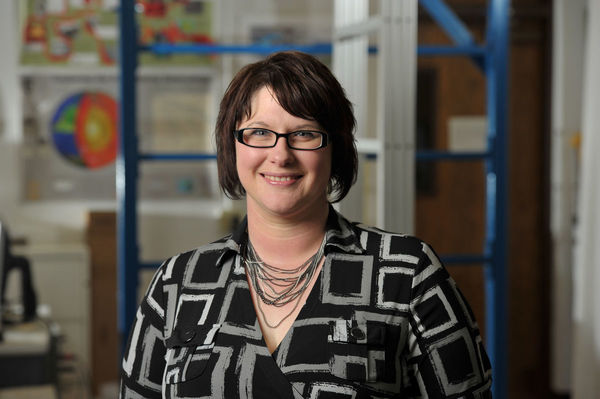 Tracy Kijewski-Correa
Tracy Kijewski-Correa
Meet Tracy L. Kijewski-Correa, Leo E. and Patti Ruth Linbeck Collegiate Chair and associate professor of civil and environmental engineering and earth sciences.
Kijewski-Correa’s work focuses on the unique challenges facing 21st-century infrastructure, with her current efforts directed toward sustainable reconstruction of urban housing in Haiti following the 2010 earthquake. She leads the Structural DYNamics And MOnitoring (DYNAMO) Laboratory, which addresses civil infrastructure challenges posed by increased urbanization and hazard vulnerability, using interdisciplinary collaborations and context-driven technologies. DYNAMO Lab was founded on more than a decade of experience in full-scale monitoring of urban environments, coupled with development of cyberinfrastructure and engineering virtual organizations like CyberEye that present new paradigms for cyber-collaboration and crowd-sourcing of engineering tasks including citizen “sensing” for natural hazard mitigation, post-disaster response and distributed sensing of infrastructure to enhance societal resilience.
How would you describe your research?
I develop context-appropriate solutions that increase the resilience of civil infrastructure and the communities that rely upon that infrastructure, in the face of rapid urbanization and growing hazard vulnerability. For the first time in human history, more than half our population lives in cities, and that percentage is expected to hit 70 percent in the next few decades. This is creating large concentrations of life and property in urban zones, many of which are located along the coastlines threatened by the effects of climate change and geophysical hazards like tsunamis and earthquakes. It is our responsibility as civil engineers to ensure these cities and their inhabitants are safe, and this ultimately translates to increasing their resilience to these threats.
How did you become interested in your line of research?
As a child growing up on the south side of Chicago, I was always in awe of the great builders. I wanted to build skyscrapers and designed my own miniature cities out of Legos. In that regard, I probably was not your typical little girl. When I was about 10, I remember watching the images of rescue workers poring through the rubble of the Mexico City earthquake at my grandparents’ house. I remember feeling so powerless and frustrated by the devastation. With all our knowledge and capability, how could this still be happening? As a society we should be able to do better than this. We should be able to protect those families. I imagine that was the day that my childhood love of Legos took a far more serious turn. I wanted to solve this problem, and as a graduate student it became very clear that big problems, problems worth solving, require you to leave your comfort zone and move across disciplinary boundaries. Ever since then, I have widened my circle from the physical structures that keep people safe to an entire assortment of disciplines within and beyond engineering that will help us arrive at a holistic solution to building community resilience. When we get there, I guess I will have some peace that I did right by the people of Mexico City.
Where do you conduct your research?
I conduct my research in a number of venues, much of it in the field. I have conducted post-disaster reconnaissance to document the failures observed after the Haiti earthquake and the Boxing Day tsunami in Southeast Asia. We also operate a permanent field office in Haiti to support resilience-enhancing exercises with these populations and facilitate the adoption of new housing technologies. Meanwhile, the sensor networks we deploy are first developed and validated on small-scale structures in my laboratory in Cushing Hall, before they are ultimately deployed on buildings around the world. In fact, our sensor networks for tall buildings have been operating since 2002 and have assembled data from over 70 buildings including the world’s tallest building, Burj Khalifa. Beyond this, because we have interest in citizen engineering, we have a growing virtual laboratory in cyberspace with human subjects all over the world working through our web-portals on data collection and analysis tasks.